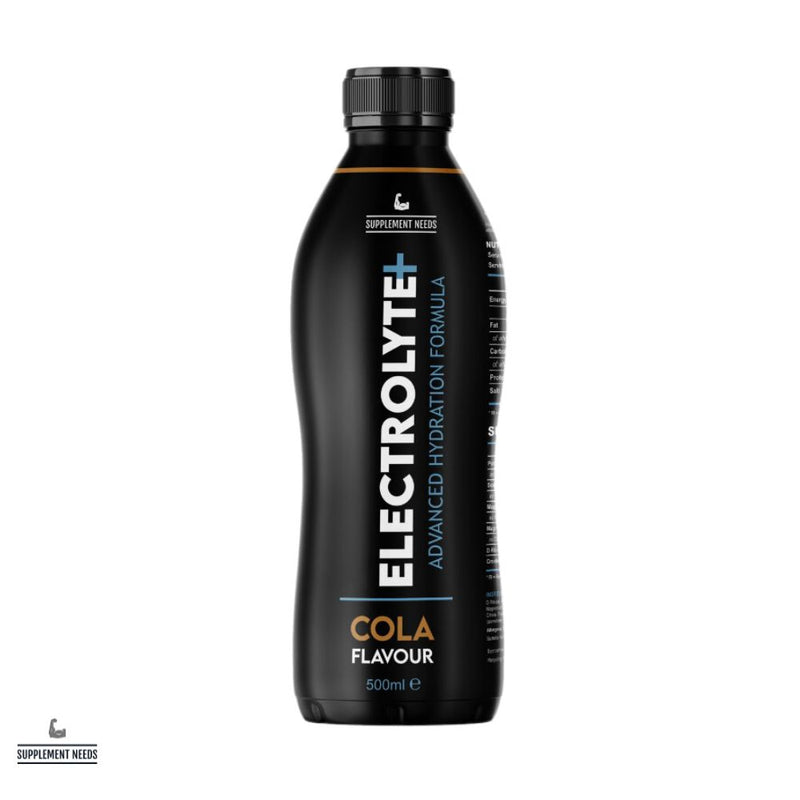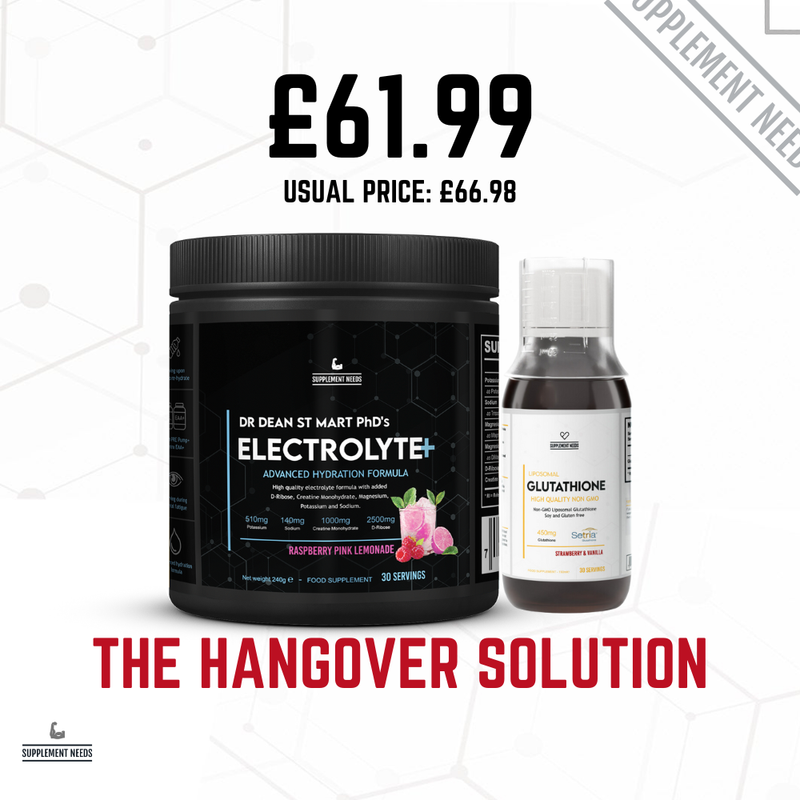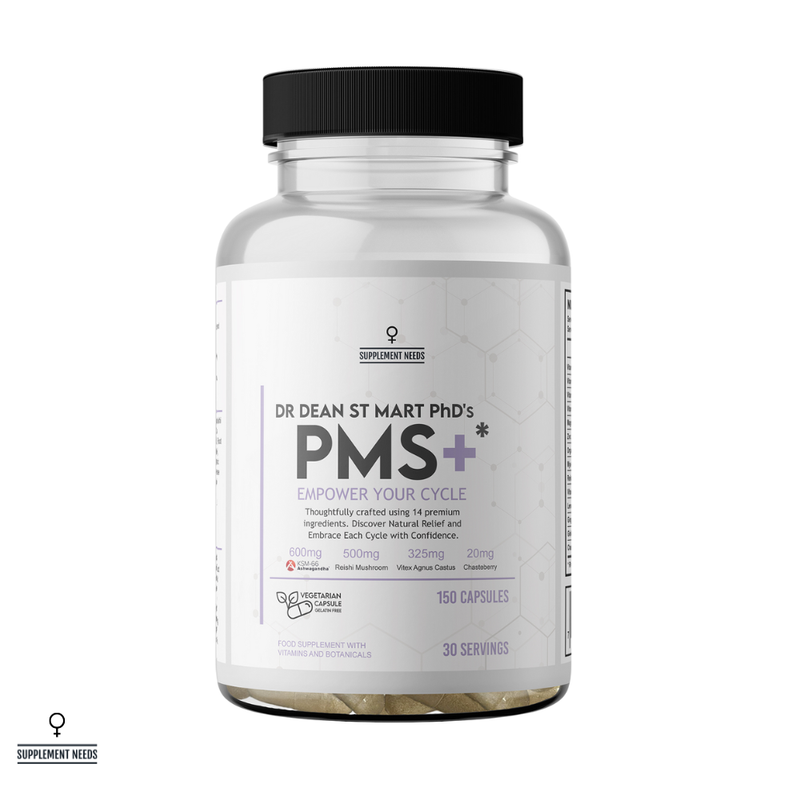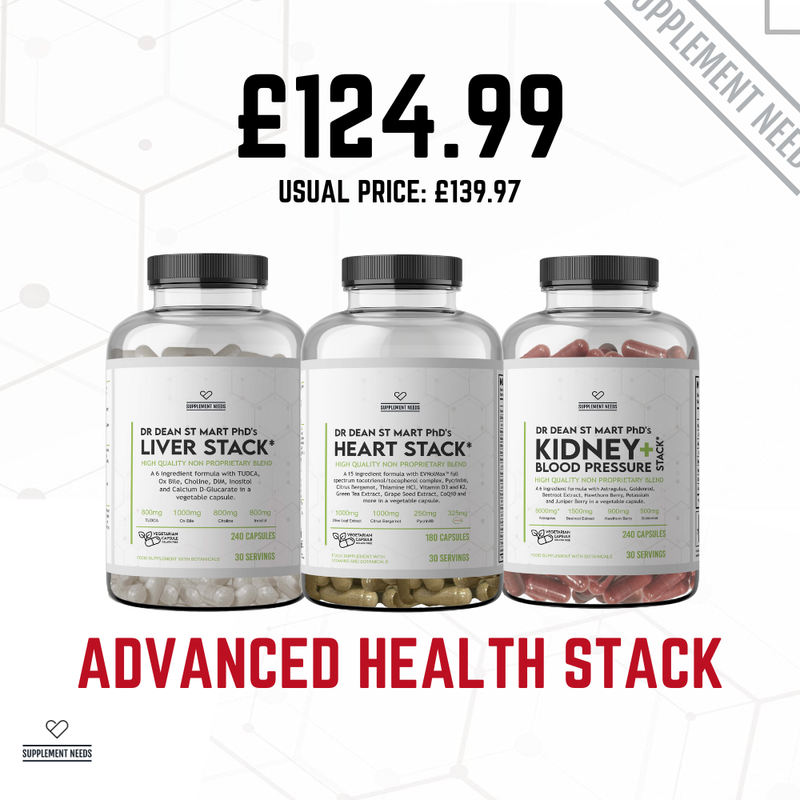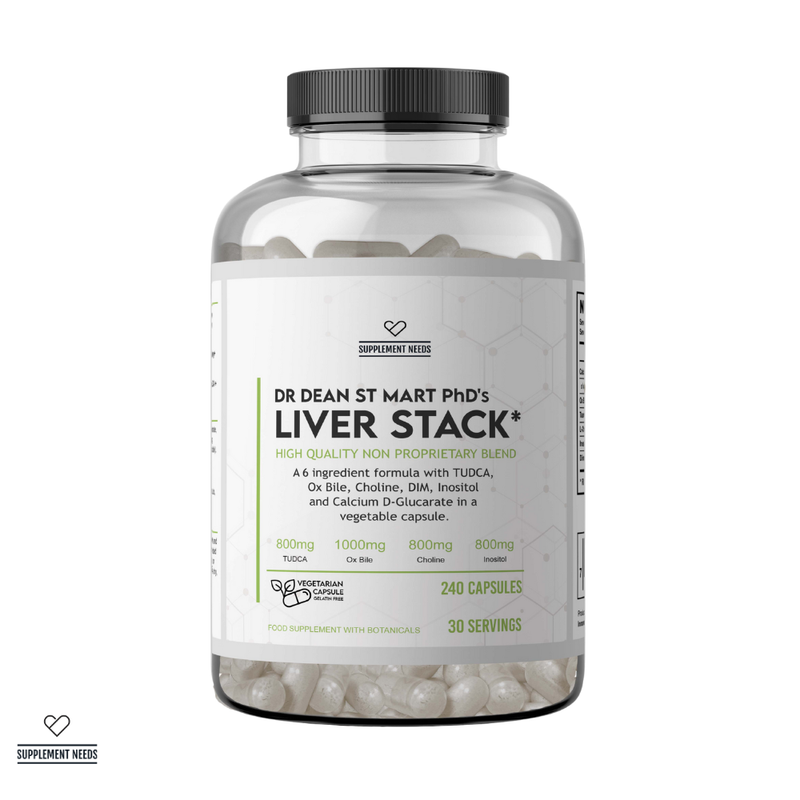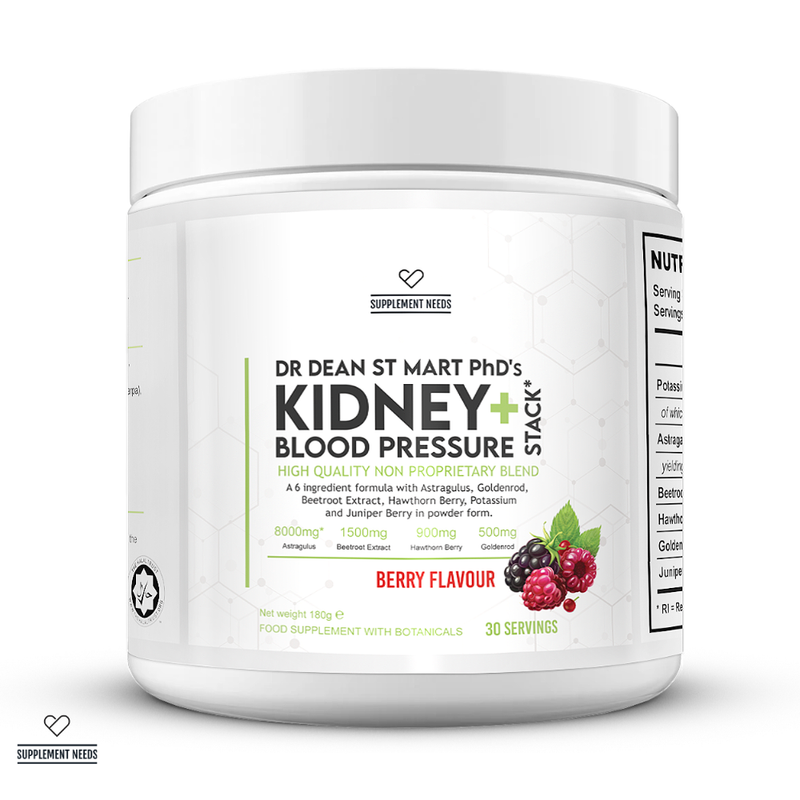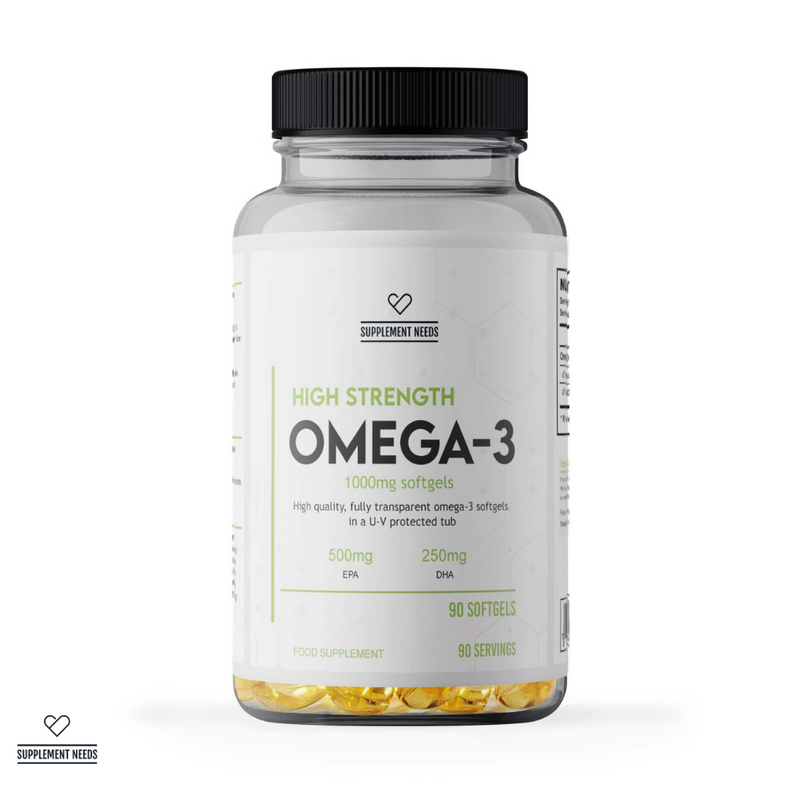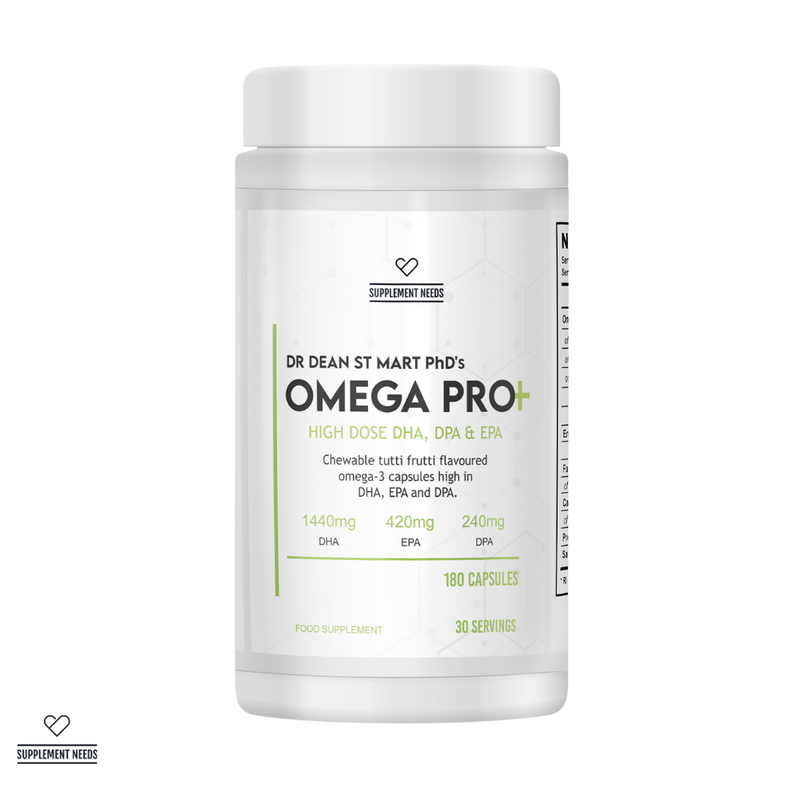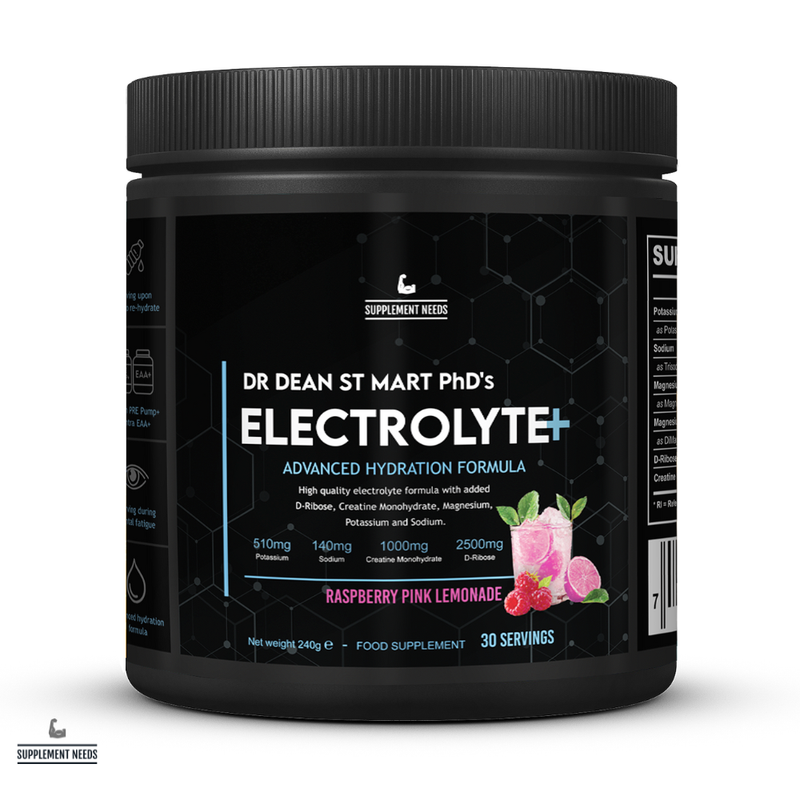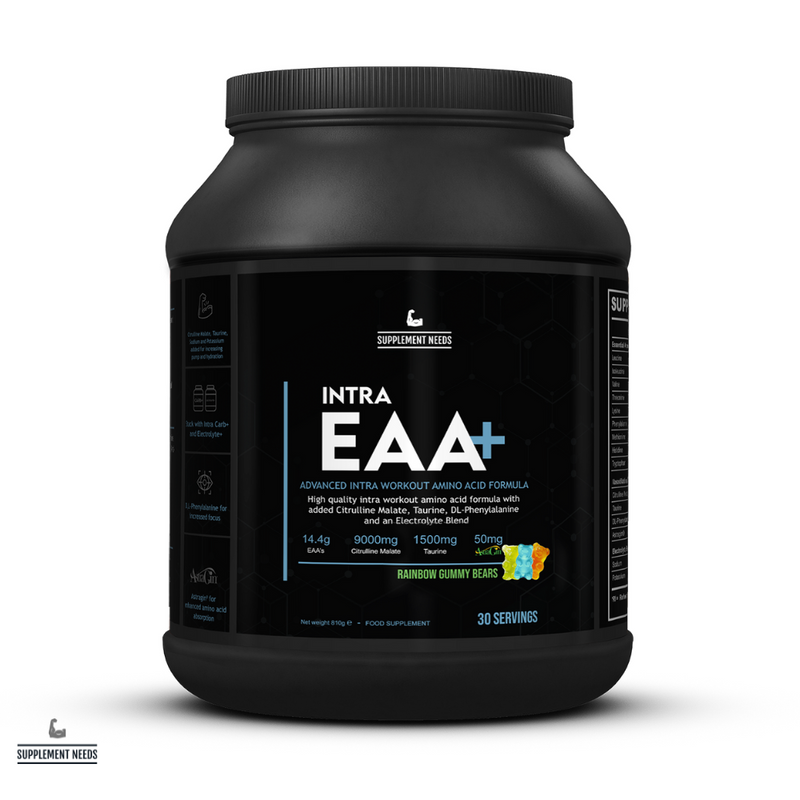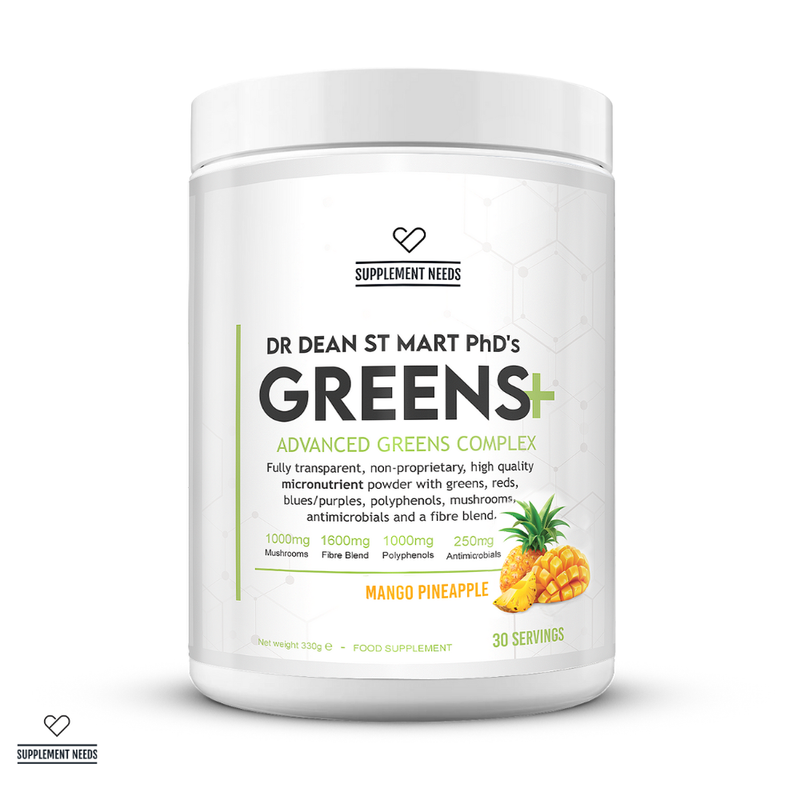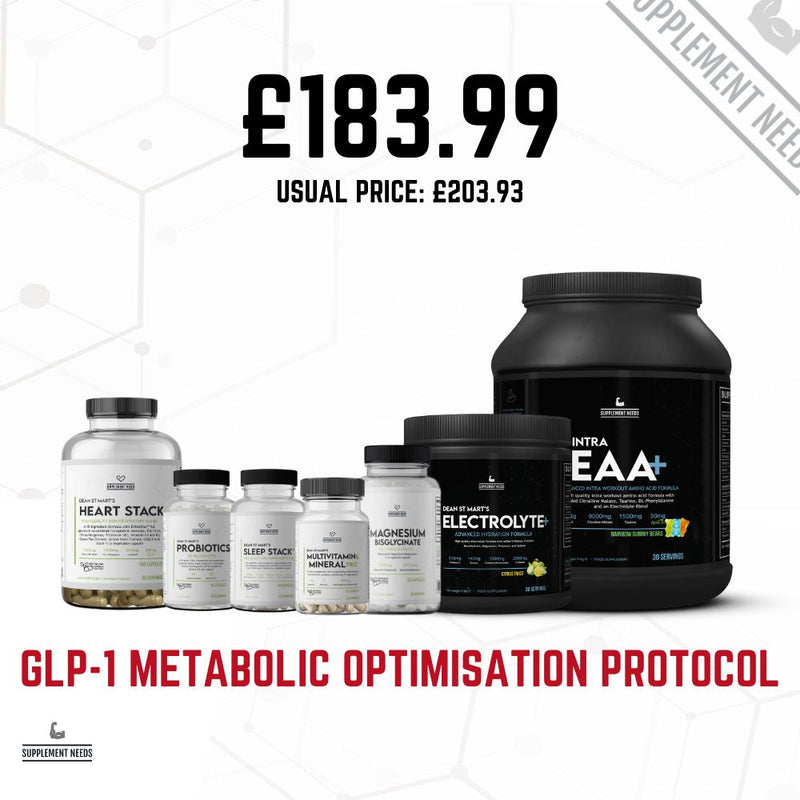Harnessing the power of ultra-low temperatures, cryotherapy is rapidly becoming a popular treatment amongst bodybuilders, athletes, and fitness fanatics of all kinds. But, what exactly is it? And what are its potential benefits? The Supplement Needs team investigates…
What is cryotherapy?
Cryotherapy - which is also commonly referred to as ‘cold therapy’ - is an overarching umbrella term that covers types of treatment that involve subjecting your body to extremely low temperatures (which can span from 1ºC to negative 90 to 150ºC).
The scientific literature describes the purpose of cryotherapy as, ‘the withdrawal of heat assisted by way of reductions in core and tissue temperatures’1. In terms of cryotherapy’s physiological effects, the literature states that, ‘the efficacy of cryotherapy is seen to be important primarily due to analgesic benefits2 associated with slowing sensory nerve conduction velocity3’.
In general, you’ll find that cryotherapy is divided into two types:
- Targeted cryotherapy - where the treatment is administered to a specific body part e.g. a joint or limb.
- Whole body cryotherapy (WBC) - where the individual’s entire body is subjected to very low temperatures.
Both of these types of cryotherapy can be administered in different ways. Let’s take a look at each type and the ways in which they can be administered.
What are the different types of cryotherapy?
As we mentioned above, cryotherapy treatments can be divided into two main types. However, each of these types can be administered in different ways.
Whole body cryotherapy (WBC)
Whole body cryotherapy is typically administered via a walk-in chamber or ice bath. The former is a chamber that visually resembles something akin to a phone box or a photo booth.
Within the chamber a system using either electricity or liquid nitrogen then rapidly drops the temperature (although this can vary depending on the exact chamber).
This is when the cryotherapy begins proper. Once you’ve been in the chamber for around two to three minutes - you can then leave it, with the treatment having been completed.
You’ll find that nearly all cryo chambers feature a window or glass door - which allows the user to communicate with the attendant operating the chamber.
Recent years have seen further evolutions of the traditional cryo chamber. Newer variations of cryo chambers include:
-
Two-stage cryo chambers: as the name suggests, these are cryo chambers that feature two compartments. The first, which acts as an antechamber, has a temperature of around -60ºC. This allows the user to adjust before stepping into the second chamber where the temperature can be as low as -150ºC.
-
Cryo barrel (cryo sauna): imagine standing in a large barrel with your head poking out the top. That’s effectively how a cryo barrel works.
- Ice baths: the other most popular form of whole body therapy is ice baths. These are - as the name suggests - baths which are designed to deliver cryotherapy across the entire body (including the head if submerged). Whilst the name conjures up images of a vat filled with ice and water, premium ice baths are actually technically advanced, including features such as digital temperature control and integrated water jets to provide additional therapeutic effect.
Note - at the SN Hub we provide whole body cryotherapy in the form of an advanced smart ice bath which can provide; short recovery time post-exercise, faster resolution of soft tissue injuries, reduction of fatigue, amelioration of muscle and joint soreness/inflammation, and assist with neural and cardiovascular system recovery.
Targeted cryotherapy
Given that targeted cryotherapy involves treating only specific parts of the body, it naturally follows that there are numerous forms that targeted cryotherapy can take.
In fact, if you regularly work out or play sports, you’ve probably engaged in target cryotherapy without realising it.
How? Well, even something as simple as putting a frozen bag of peas on a twisted knee counts as a form of (albeit rudimentary) cryotherapy.
Targeted cryotherapy - also sometimes referred to as localised cryotherapy - can take a number of forms. These include:
-
Chilled air vapour (at around -115ºC) - which is sprayed on to the affected area for between three and five minutes.
-
Ice packs - applied to the affected area for several minutes at a time. Note; there are different types of ice packs, including cubed, crushed, and wetted ice. It is speculated that wetted ice is especially effective at lowering the surface temperature of affected areas.
-
Ice massage - an ice massage involves massaging the affected area with a piece of ice for around five to 10 minutes. The ice is typically applied directly to the skin and massaged in a circular motion.
- Dipstick method - this procedure involves soaking a cotton bud in liquid nitrogen and applying it to a very targeted area of the body. Note - this form of cryotherapy is typically used for very specific therapeutic applications such as the removal of warts.
Whilst these are the most common forms of localised cryotherapy, there is also a surgical form of cryotherapy. This is known as cryoablation and involves guiding a cryogenic probe into the body through an incision. This form of cryotherapy is normally used to treat tumours.

A note on the Lewis Hunting Reaction
An interesting fact is that if you partake in cryotherapy you are likely to experience the Lewis Hunting Reaction. Also known as the Lewis Hunting Response (or just the Hunting Reaction), this is a phenomenon whereby your body cycles through both vasoconstriction and vasodilation4.
Initially observed by Thomas Lewis in 1930 (hence the name), the Lewis Hunting Reaction begins when the body is submerged in very low temperature water. This induces vasoconstriction where the body attempts to minimise heat loss and results in the extreme cooling of the extremities (e.g. hands and feet).
Within about five to ten minutes, this is followed by vasodilation whereby the body dilates blood vessels - increasing blood flow and inducing an increase in temperature in the extremities (this is why you’ll tend to go very red when you’re in an ice bath).
After this - if the body remains submerged in very low temperature water, the cycle continues.
If you’re wondering what the purpose of the Lewis Hunting Reaction is, it’s effectively the body’s adaptive response to exposure to extreme cold. It’s the body’s way of attempting to maintain its temperature in response to its environmental surroundings5.
What are the potential benefits of cryotherapy?
So, why should you be interested in cryotherapy? And, why have we installed a cryotherapy ice bath in our new SN Hub? The answer is because cryotherapy has been linked with a surprisingly large number of potential benefits.
We’ve detailed the potential benefits of cryotherapy below:
May prevent and treat muscle soreness
Arguably the biggest potential benefit of cryotherapy - at least for bodybuilders and fitness fanatics like yourself - is the ability to both prevent and treat muscle soreness.
This isn’t a mere supposition from the users of ice baths, either. There’s real-world science behind this claim.
For example, one meta-analysis6 of 17 trials concluded that, ‘There was some evidence that cold-water immersion reduces delayed onset muscle soreness after exercise compared with passive interventions involving rest or no intervention’.
On a related point, studies have also indicated that cryotherapy may enhance muscle recovery following exercise. One study concluded that, ‘cooling enhances recovery of strength and reduces soreness following eccentric exercise’7.
In addition to potentially ameliorating muscle soreness, cryotherapy (in particular cold water immersion), may also augment endurance adaptations. How? Well, one study concluded that cold water immersion assists with endurance adaptations as it, ‘enhances the gene expression of PGC-1ɑ and may therefore provide a valuable strategy to enhance exercise-induced mitochondrial biogenesis’8.
Summary - a sizable body of research suggests that cryotherapy may both prevent and treat muscle soreness. A more limited body of evidence suggests that cold water immersion may possibly assist with endurance adaptations.
May assist with recovery from injury
Soft-tissue damage (e.g. damage to muscles, ligaments, tendons etc), can be a common occurrence for individuals who regularly engage in resistance training, and/or sports.
And, as we pointed out above, rudimentary forms of cryotherapy (e.g. the application of a bag of frozen peas to an injured body part) have long been seen as a way of helping to reduce swelling and spur on repair of said tissue damage. Note - the claim here isn’t that cryotherapy directly repairs soft tissue damage, instead it acts upon inflammation and pain thus helping to trigger tissue repair and regeneration.
Today, a growing number of studies provide further credence to this traditional view of cryotherapy. A widely cited animal-study published in the BMJ found that ‘cryotherapy may be recommended in the first 6 hours following an injury to reduce pain (and possible haematoma)9.
Other studies have found that cryotherapy is effective at reducing pain post-injury, however ‘the exact effect of cryotherapy on more frequently treated acute injuries (e.g. muscle strains and contusions) has not been fully elucidated’10.
One study has found a potentially strong link between the application of cryotherapy and reduced inflammation post-injury. The study’s authors concluded that ‘Our study confirmed the initial hypothesis that cryotherapy could have a beneficial effect on inflammatory process, without affecting the regeneration process after TA (Tibialis anterior muscle) injury’11.
Yet another study12 found that cryotherapy (particularly whole body cryotherapy) may play a role in ameliorating muscle damage.
Whilst acknowledging that the mechanism of action is still unknown, the researchers suggested that ‘the attenuation in serum sICAM-1 caused by WBC exposure immediately following EIMD (Exercise Induced Muscle Damage) may be responsible for the decreased acute inflammatory response to muscle damage. In addition, repeated bouts of WBC may also further reduce the secondary inflammation occurring days after the damaging bout of exercise’.
Summary - cryotherapy appears to have a beneficial effect upon post-injury inflammation. However, further research is needed.
May help treat chronic skin conditions
If you suffer from a chronic condition like atopic dermatitis then you may be surprised to learn that cryotherapy may potentially help to treat it.
Given that cryotherapy has been demonstrated to improve antioxidant levels, it can potentially have a therapeutic effect upon inflammation-driven skin conditions like dermatitis.
One study13 of 18 individuals - who were subjected to an average of 11 whole body cryotherapy sessions - concluded that, ‘Whole-body cryotherapy, another physical therapy, offers a new option in the armament of therapies for atopic dermatitis. In our patients, whole-body cryotherapy was successfully carried out as monotherapy during the treatment period i.e. no anti-inflammatory topical preparations were used’.
Another - albeit small - study14 concluded that whole-body cryotherapy ‘can be an effective, supporting method in the treatment of AD (atopic dermatitis)’.
A comprehensive literature review15 has also suggested that cryotherapy may have a beneficial therapeutic effect upon dermatitis. The review concluded that, ‘Numerous studies indicate a reduction in the severity of inflammation and oxidative stress, which may indirectly affect the ageing process of the skin and improve its appearance. An important effect of the treatment is the improvement of blood circulation’.
Research does also suggest that cryotherapy may not only help to treat conditions like dermatitis, but also alleviate symptoms associated with those conditions (such as itching). A study16 of 28 individuals, which saw them put through a treatment regime of cryotherapy, found that ‘On the day immediately after treatment, the VAS score for itch in the treated-side group was lower following cryotherapy application than as compared within the control-side group’.
The same study concluded that ‘The novel cryotherapy tested herein may be a valuable antipruritic therapeutic remedy in patients with atopic dermatitis’.
Summary - a somewhat limited evidence base suggests that cryotherapy may be effective in treating or alleviating the symptoms of certain skin conditions. However, it is strongly recommended that you consult with a medical professional before undergoing any cryotherapy for a skin condition.

May help lift mood and alleviate mood disorders
A perhaps surprising potential benefit of cryotherapy is its ability to improve mood and positively influence mood disorders.
This is thought to be due to the way in which subjection to very cold temperatures (such as in an ice bath) results in the body releasing adrenaline, endorphins and noradrenaline.
Cryotherapy’s relation to mood disorders has been studied with one particular 2008 paper finding that there is a ‘possible role for WBCT as a short-term adjuvant treatment for mood and anxiety disorders’17.
Further studies affirm this conclusion, with one randomised-control trial18 finding that ‘Whole-body cryotherapy is a useful method to improve standard pharmacological treatment. The WBC intervention reduces mental health deterioration, especially in mood disorders, such as depression, and can be beneficial for well-being and quality of life’.
Even more studies link cryotherapy with reductions in the symptoms of mood disorders and depression. A 2007 Polish19 study concluded that, ‘Cyclic short-term whole-body exposition to extremely low temperatures significantly reduced the severity of depressive and anxiety symptoms and increased the life satisfaction’.
Finally, another study20 found that even just partaking in cryotherapy can alter the mental state. Here’s how the study described this unusual effect: ‘Immediately after passing into the cryogenic chamber, apart from the well known analgesic effect, we detect changes in patients’ mental state such as improvement of mood, deep relaxation, freshening up, consolation, euphoria. This unusual state lasts for a long time after ending the cycle of cryotherapy’.
Summary - a growing body of evidence suggests that cryotherapy could have a potentially beneficial effect upon mood disorders.
May support cognitive function and health
In addition to potentially treating the symptoms of depression (and other mood disorders), cryotherapy has been linked to improvements in cognitive function. Consider the following studies:
-
Preliminary studies have suggested that whole body cryotherapy may be an effective method of improving cognitive functioning, especially memory processes21.
-
A study22 has indicated that whole body cryotherapy ‘may become an effective early intervention for mild cognitive impairment’. In other words, it may have a therapeutic effect on cognitive dysfunction that may have the potential to transform into dementia.
- Whole-body cryotherapy may be utilised as a means of preventing Alzheimer’s disease due to its anti-inflammatory and anti-oxidative effects, according to one study23.
Summary - not only may cryotherapy support normal cognitive function, but it may potentially provide a preventative role against certain neurodegenerative diseases.
May improve sleep and quality of sleep
As we’ve written about previously here at Supplement Needs, sleep hygiene plays a critical role in your overall bodily health and wellbeing.
Cryotherapy - it may surprise you to learn - may potentially improve the quality of your sleep.
In one study, 22 active men were selected to randomly undergo either cryotherapy, or simply engage in passive recovery. The participants were then asked to undertake a training regime each evening that consisted of 25 minutes of continuous running at 65% of the maximal aerobic speed, followed up by intermittent running at 85% of maximal aerobic speed.
Following each training session a selection of participants were then subjected to cryotherapy.
The result?
‘Subjective sleep quality following WBC was significantly better than the control group’24.
Another study25 reinforces the link between cryotherapy and sleep, concluding that cryotherapy ‘improves subjective sleep quality and reduces muscle damage and inflammatory responses’.
A field study26 published in the British Journal of Sports Medicine found that ‘Athletes experienced better sleep quality after WBC exposure. Even if the night duration was short during this period, they expressed they had a deeper, quieter and less disturbed sleep’.
The link between cryotherapy and sleep has shown such potential that some scientists have explored whether cryotherapy could be used as a treatment for obstructive sleep apnea. Although evidence in this area is limited, a study involving 20 men and 10 women with obstructive sleep apnea did find a beneficial effect of cryotherapy upon their apnea hypopnea index (AHI).
To quote the study verbatim: ‘The median (range) of percentage reduction in baseline AHI was 71.36% (42.05-86.38). Above 50% reduction in baseline AHI was achieved in 90% of patients with a mean of 70.63%, while only 10% showed 20-50% reduction with a mean of 45.78%’.
The study concluded that ‘Cryotherapy is a safe and promising intervention for treatment of OSA patients’.
Summary - a fairly substantial evidence base suggests a strong link between cryotherapy and improved sleep quality.
May help treat acute lower back pain
Incidences of acute lower back pain are widespread with approximately 75% of adults developing acute lower back pain at least once in their life. Further, around 5-7% of adults over the age of 45 in the UK suffer persistent, chronic back pain28.
With cryotherapy having been demonstrated to have promising anti-inflammatory effects, attention has turned to whether it can be used as a treatment for acute bouts of lower back pain.
Perhaps the most comprehensive study of cryotherapy’s effect on lower back pain stems from 2014 when a team of researchers conducted a clinical trial involving 87 patients. A selection of these patients were then subjected to cryotherapy.
The conclusion of the study is certainly positive, with the authors summarising their findings as follows: ‘The results indicated that the application of thermotherapy and cryotherapy accompanied by a pharmacological treatment could relieve pain in the patients with acute low back pain’29.
Summary - despite a small evidence base at present, cryotherapy may have a beneficial effect upon acute lower back pain. More studies are nevertheless required.
May help to manage chronic pain
Staying on the theme of ‘pain’ - but this time chronic pain - cryotherapy has also been studied for the role it could play in helping individuals manage and alleviate chronic pain.
In fact, the efficacy of cryotherapy in alleviating chronic pain is such that many NHS trusts offer cryotherapy as a treatment.
But, what does the evidence-base tell us?
A meta-analysis30 of 22 studies found that ‘Both local and non-local cryotherapy applications show promise in reducing chronic pain associated with various chronic diseases including those of rheumatic and degenerative origin. Cryotherapy appears to be a safe therapy in carefully selected patients, with only minimal adverse effects reported in the literature’.
As we saw above, cryotherapy has been demonstrated to have a potentially therapeutic effect on acute lower back pain. Studies suggest that it could also have a beneficial effect upon chronic lower back pain. One experimental study31 concluded that: ‘Whole-body cryotherapy is an effective therapy for pain and disability treatment in chronic low back pain. It also produces changes in serum markers of inflammation, decreasing pro-inflammatory markers and increasing anti-inflammatory markers’.
Summary - cryotherapy may have a therapeutic effect upon chronic pain conditions. However, further research is required.

Access the benefits of cryotherapy at the SN Hub
The SN Hub - Supplement Needs’ dedicated premier health and fitness destination - has an exclusive whole-body cryotherapy ice bath.
It’s exactly the same type of cryotherapy ice bath as used by AC Milan, Bayern Munich, Legia Warsaw, Manchester City FC, Toronto Blue Jays, Brooklyn Nets, Manchester United, Wembley Stadium, and Wimbledon.
If you want to access elite-level cryotherapy - and enjoy the potential benefits outlined above - you need to become a member of the SN Hub today.
Find out more about the SN Hub and experience the ultimate fitness playground
For more insights and information about recovery therapies and supplements, read the Supplement Needs blog…
The Ultimate Guide to Buying Vitamins & Multivitamins | How to Boost Your Immune System | What Are the Different Types of Antioxidant Supplements?
Disclaimer
The information on this website should not be used as a substitute for professional medical advice or care. If you have questions about your health, please contact your doctor.
References
1. Allan R, Malone J, Alexander J, et. al. Cold for centuries: a brief history of cryotherapy to improve health, injury and post-exercise recovery [online]. Available at: https://pmc.ncbi.nlm.nih.gov/articles/PMC9012715/ (Accessed on 31st October 2024).
2. Murray A, Cardinale M. Cold applications for recovery in adolescent athletes: a systematic review and meta analysis [online]. Available at: https://pubmed.ncbi.nlm.nih.gov/26464795/ (Accessed on 31st October 2024).
3. Herrera E, Sandoval M, Camargo D, et. al. Motor and sensory nerve conduction are affected differently by ice pack, ice massage, and cold water immersion [online]. Available at: https://pubmed.ncbi.nlm.nih.gov/20185615/ (Accessed on 31st October 2024).
4. Dana Jr A, Rex Jr I, Samitz M. The Hunting Reaction [online]. Available at: https://jamanetwork.com/journals/jamadermatology/article-abstract/530922 (Accessed on 4th November 2024).
5. Kam P, Power I, Cousins M, et. al. Temperature Regulation. In, Principles of Physiology for the Anaesthetist (4th Edition). CRC Press. Boca Raton.
6. Bleakley C, McDonough S, Gardner E, et. al. Cold-water immersion (cryotherapy) for preventing and treating muscle soreness after exercise [online]. Available at: https://www.cochranelibrary.com/cdsr/doi/10.1002/14651858.CD008262.pub2/full (Accessed on 4th November 2024).
7. Kwiecien S, O’Hara D, McHugh M, et. al. Prolonged cooling with phase change material enhances recovery and does not affect the subsequent repeated bout effect following exercise [online]. Available at: https://link.springer.com/article/10.1007/s00421-019-04285-5 (Accessed on 4th November 2024).
8. Ihsan M, Watson G, Choo H, et. al. Postexercise muscle cooling enhances gene expression of PGC-1ɑ [online]. Available at: https://pubmed.ncbi.nlm.nih.gov/24561815/ (Accessed on 4th November 2024).
9. Racinais S, Dablainville V, Rousse Y, et. al. Cryotherapy for treating soft tissue injuries in sport medicine: a critical review [online]. Available at: https://bjsm.bmj.com/content/58/20/1215.abstract (Accessed on 4th November 2024).
10. Hubbard T, Denegar C. Does Cryotherapy Improve Outcomes With Soft Tissue Injury? [online]. Available at: https://pmc.ncbi.nlm.nih.gov/articles/PMC522152/ (Accessed on 4th November 2024).
11. Ramos G, Pinheiro C, Messa S, et. al. Cryotherapy Reduces Inflammatory Response Without Altering Muscle Regeneration Process and Extracellular Matrix Remodelling of Rat Muscle [online]. Available at: https://www.nature.com/articles/srep18525#Sec27 (Accessed on 4th November 2024).
12. Ferreira-Junior J, Bottaro M, Loenneke J, et. al. Could whole-body cryotherapy (below -100ºC) improve muscle recovery from muscle damage? [online]. Available at: https://www.frontiersin.org/journals/physiology/articles/10.3389/fphys.2014.00247/full (Accessed on 4th November 2024).
13. Klimenko T, Ahvenainen S, Karvonen S. Whole-Body Cryotherapy in Atopic Dermatitis [online]. Available at: https://jamanetwork.com/journals/jamadermatology/fullarticle/419737 (Accessed on 4th November 2024).
14. Kepinska-Szyszkowska M, Misiorek A, Kapinska-Mrowiecka M, et. al. Assessment of the Influence Systemic Cryotherapy Exerts on Chosen Skin Scores of Patients with Atopic Dermatitis: Pilot Study [online]. Available at: https://pmc.ncbi.nlm.nih.gov/articles/PMC7495168/ (Accessed on 4th November 2024).
15. Dzidek A, Piotrowska A. The Use of Cryotherapy in Cosmetology and the Influence of Cryogenic Temperatures on Selected Skin Parameters - A Review of the Literature [online]. Available at: https://www.mdpi.com/2079-9284/9/5/100 (Accessed on 4th November 2024).
16. Lee E, Lee H, Park K, et. al. Effect of a new cryotherapy device on itchy sensation in patients with mild atopic dermatitis [online]. Available at: https://pubmed.ncbi.nlm.nih.gov/33538104/ (Accessed on 4th November 2024).
17. Rymaszewska J, Ramsey D, Chładzińska-Kiejna S. Whole-body cryotherapy as adjunct treatment of depressive and anxiety disorders [online]. Available at: https://pmc.ncbi.nlm.nih.gov/articles/PMC2734249/ (Accessed on 4th November 2024).
18. Rymaszewska J, Lion K, Pawlik-Sobecka L, et. al. Efficacy of the Whole-Body Cryotherapy as Add-on Therapy to Pharmacological Treatment of Depression - A Randomised Controlled Trial [online]. Available at: https://pmc.ncbi.nlm.nih.gov/articles/PMC7296110/# (Accessed on 4th November 2024).
19. Rymaszewska J, Ramsey D, Chładzińska-Kiejna S, et. al. Can short-term exposure to extremely low temperatures be used as an adjuvant therapy in the treatment of affective and anxiety disorders? [online]. Available at: https://pubmed.ncbi.nlm.nih.gov/18421919/ (Accessed on 4th November 2024).
20. Rymaszewska J, Biały D, Zagrobelny Z, et. al. The influence of whole body cryotherapy on mental health [online]. Available at: https://pubmed.ncbi.nlm.nih.gov/11059263/# (Accessed on 4th November 2024).
21. Senczyszyn A, Wallner R, Szczesniak D, et. al. The Effectiveness of Computerized Cognitive Training Combined With Whole Body Cryotherapy in Improving Cognitive Functions in Older Adults. A Case Control Study [online]. Available at: https://www.frontiersin.org/journals/psychiatry/articles/10.3389/fpsyt.2021.649066/full (Accessed on 4th November 2024).
22. Rymaszewska J, Lion K, Stańczykiewicz B, et. al. The improvement of cognitive defects after whole-body cryotherapy - A randomised controlled trial [online]. Available at: https://pubmed.ncbi.nlm.nih.gov/33454354/ (Accessed on 4th November 2024).
23. Misiak B, Kiejna A. Translating whole-body cryotherapy into geriatric psychiatry - - a proposed strategy for the prevention of Alzheimer’s disease [online]. Available at: https://pubmed.ncbi.nlm.nih.gov/22541861/ (Accessed on 4th November 2024).
24. Douzi W, Dupuy O, Tonneau M, et. al. 3-min whole body cryotherapy/cryostimulation after training in the evening improves sleep quality in physically active men [online]. Available at: https://pubmed.ncbi.nlm.nih.gov/30551730/ (Accessed on 4th November 2024).
25. Chaoyi Q, Zhaozhao W, Minxiao X, et. al. Cryotherapy on Subjective Sleep Quality, Muscle, and Inflammatory Response in Chinese Middle- and Long-Distance Runners After Muscle Damage [online]. Available at: https://journals.lww.com/nsca-jscr/abstract/2022/10000/cryotherapy_on_subjective_sleep_quality,_muscle,.27.aspx. (Accessed on 4th November 2024).
26. Bouzigon R, Ravier G, Dugue B, et. al. The Use of Whole-Body Cryostimulation to Improve the Quality of Sleep in Athletes During High Level Standard Competitions [online]. Available at: https://bjsm.bmj.com/content/48/7/572.1 (Accessed on 4th November 2024).
27. Saleh A, Mohamed F, Hussein M, et. al. 0615 DISE-Cryotherapy a Novel Treatment for Patients with Obstructive Sleep Apnea [online]. Available at: https://academic.oup.com/sleep/article/47/Supplement_1/A262/7654569#google_vignette (Accessed on 4th November 2024).
28. Back pain - low (with radiculopathy): How common is it? National Institute for Health and Clinical Excellence [online]. Available at: https://cks.nice.org.uk/topics/back-pain-low-without-radiculopathy/background-information/prevalence/# (Accessed on 4th November 2024).
29. Dehghan M, Farahbod F. The Efficacy of Thermotherapy and Cryotherapy on Pain Relief in Patients with Acute Low Back Pain, A Clinical Trial Study [online]. Available at: https://pmc.ncbi.nlm.nih.gov/articles/PMC4225921/ (Accessed on 4th November 2024).
30. Garcia C, Karri J, Zacharias N, et. al. Use of Cryotherapy for Managing Chronic Pain: An Evidence-Based Narrative [online]. Available at: https://pmc.ncbi.nlm.nih.gov/articles/PMC8119547/ (Accessed on 4th November 2024).
31. Salas-Fraire O, Riviera-Pérez J, Guevara-Neri N, et. al. Efficacy of whole-body cryotherapy in the treatment of chronic low back pain: Quasi-experimental study [online]. Available at: https://www.sciencedirect.com/science/article/abs/pii/S0949265821003511 (Accessed on 4th November 2024).
